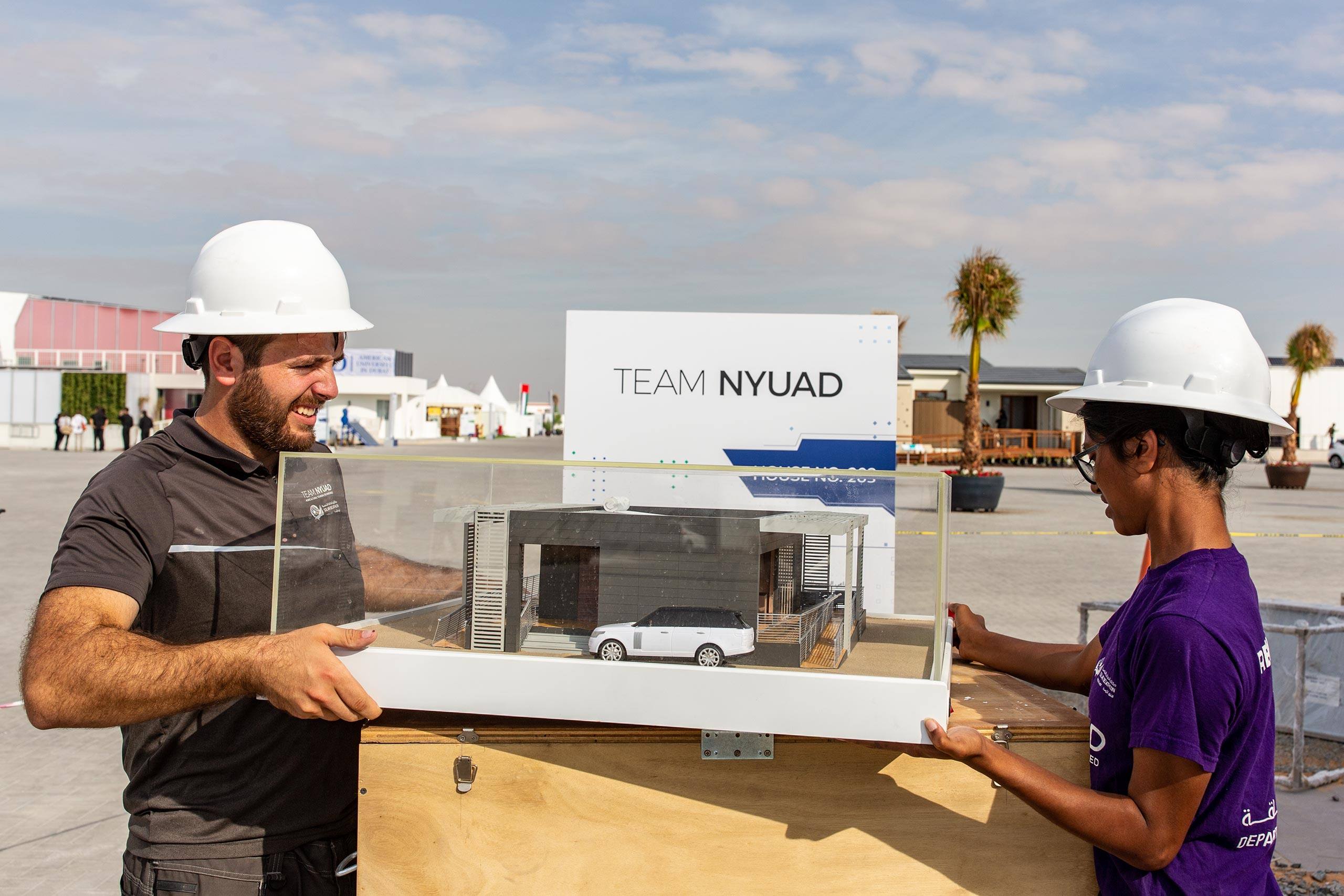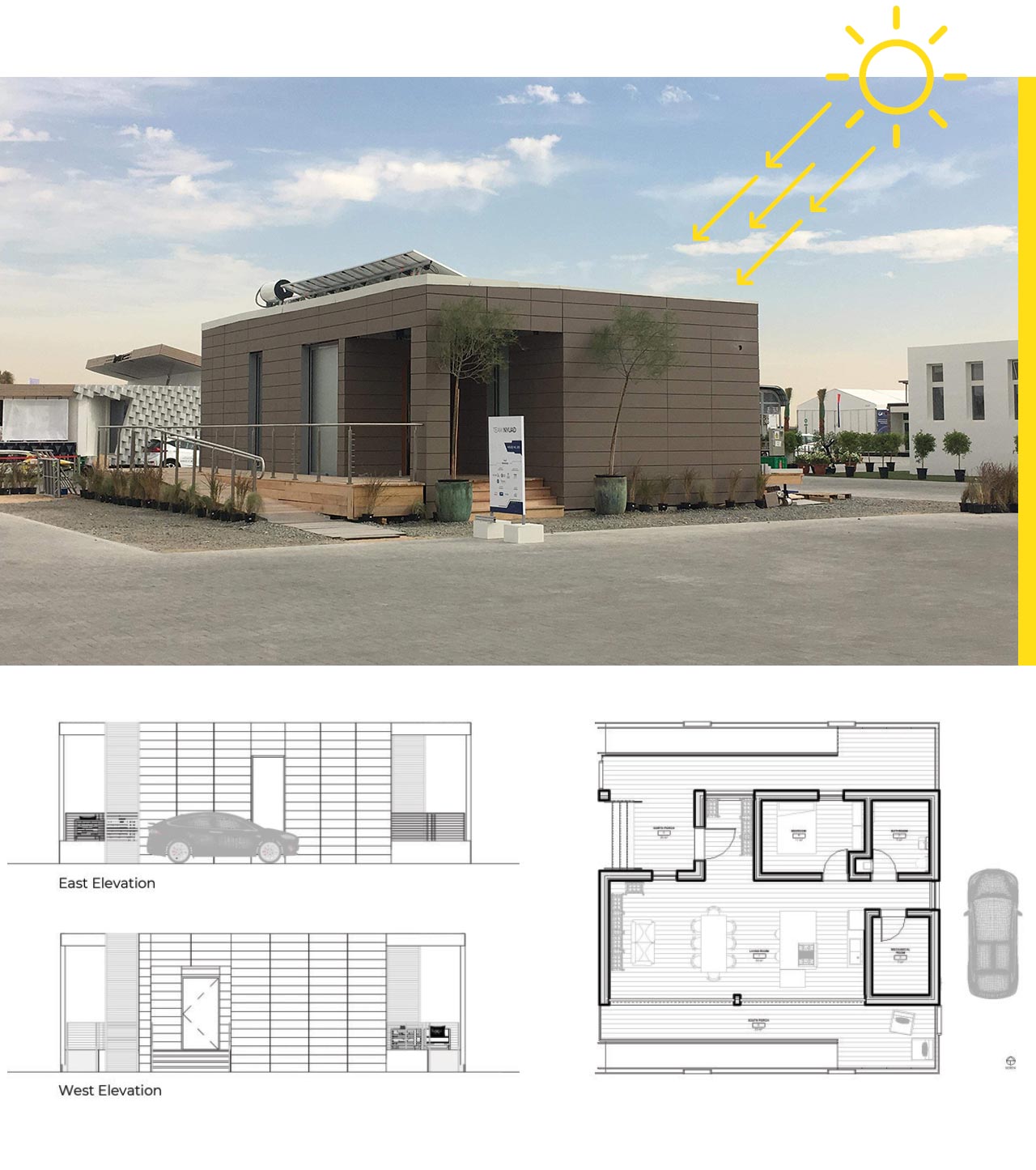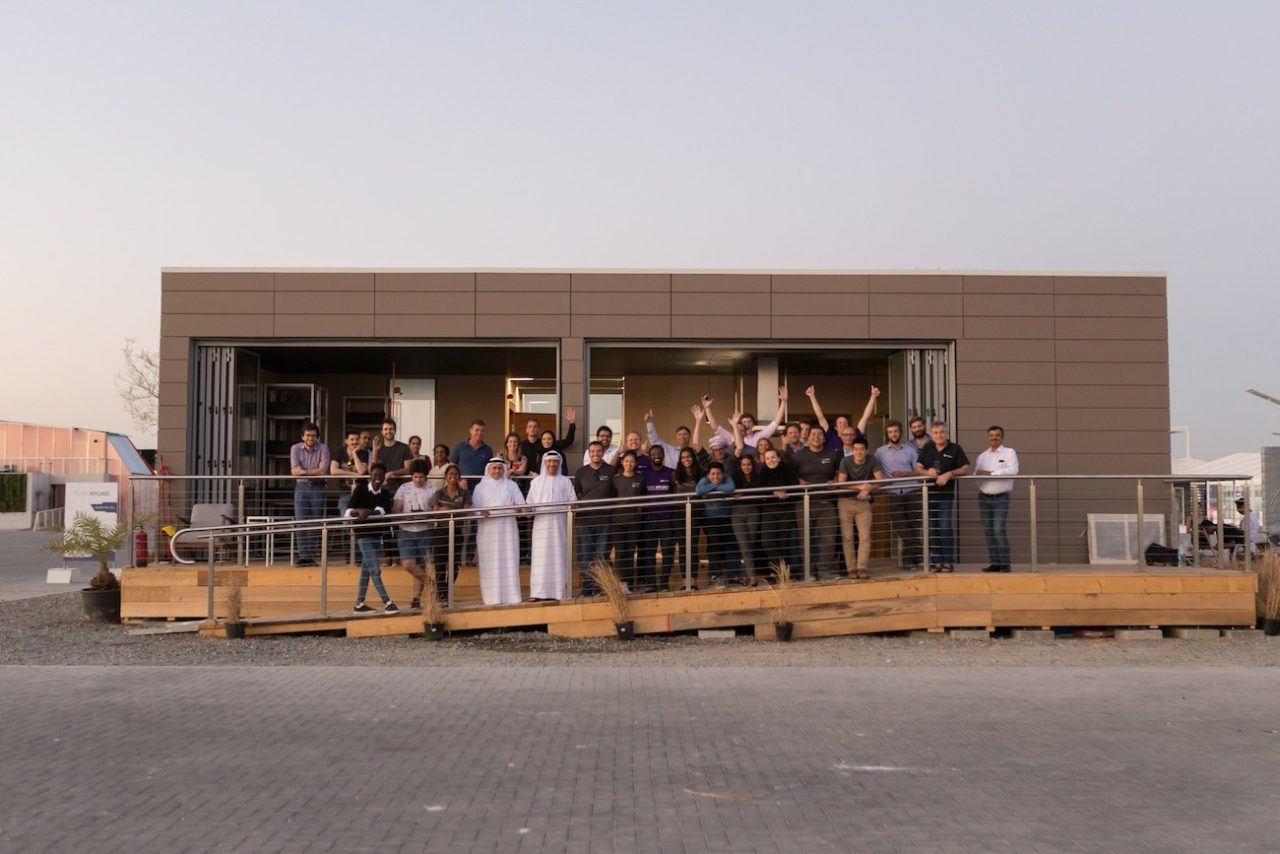
What will the houses of tomorrow look like? How can we construct them to ensure a sustainable future? A group of forward-thinking NYU Abu Dhabi students are working on it.
Planning a Solar House
Last fall, Team NYUAD completed their work on a two-and-a-half year project to design and build a fully solar-powered, 90-square-meter house. They created their project for the Solar Decathlon Middle East’s 2018 edition. The house celebrates the past and future of food, culture, and design in the United Arab Emirates. It uses abundant solar energy and high-performance materials to reimagine sustainable living in the Arabian desert. Team member Raitis Pekuss, a senior from Latvia passionate about engineering and education, says, “We decided to focus on agricultural tourism in the desert. It was an opportunity unique to the Middle East. We wanted to create our house upon local values.” For example, the students incorporated work from local artists in Abu Dhabi. In addition, guests who stay there will cook with locally grown ingredients. They also constructed the floors of the house using reclaimed teak wood from a Dubai school.
A Place to Create
Twenty-five students from about 20 different countries make up the team. Senior Hurbert Shauri, a Civil Engineering major passionate about the visual arts, got involved during his first year at NYU Abu Dhabi. “We have this place on campus called the Engineering Design Studio, where I met the other students. They saw my sketches and asked if I would join the team,” he says. Hurbert, who plans to go to graduate school for architecture, serves as the team’s design lead. He explains, “Our task was to act as architects. We had to design a house that made sense to people, yet also served a purpose. In addition, we had to figure out how to build all the house’s systems. We also had to choose finishing materials for the interior and exterior. We then needed to procure those materials. Finally, we built and presented our house.”

Participants developed skills in engineering, architecture, communications, and content generation. To that end, each team member focused on one aspect of the house’s design and learned everything they could about it. While they drew upon skills acquired in their academic disciplines, students worked outside of class to generate new skill sets and knowledge. Raitis explains, “I am in charge of the water systems in the house. Another student and I had to figure out what system would work and think through every single detail. It’s not like in a classroom where, if you don’t know something, you can always fall back on your professor.”
Bringing It All Together
In November, teams from 24 different universities from the United Arab Emirates, Australia, Europe, the United States, and Asia gathered in Dubai to showcase their creations. It was the first time the competition, which originated in the United States, took place in the Middle East. Team NYUAD garnered attention on the sustainability front for their quick-to-construct modular aluminum structure. Judges also praised their use of Plyboo and terracotta for the house’s interior and exterior facades, respectively. In addition, the open floor design showcased their in-house food growing system, celebrating the UAE’s culture of food and social gatherings. The students will exhibit their house in Dubai for a full calendar year until the end of 2019.

